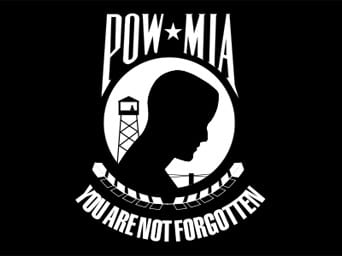 The Department of Defense POW/Missing Personnel Office (DPMO) announced today that the remains of nine servicemen, missing in action from World War II, have been identified and are being returned to their families for burial with full military honors.
The Department of Defense POW/Missing Personnel Office (DPMO) announced today that the remains of nine servicemen, missing in action from World War II, have been identified and are being returned to their families for burial with full military honors.
Army Air Forces 1st Lt. William J. Sarsfield of Philadelphia; 2nd Lt. Charles E. Trimingham of Salinas, Calif.; Tech. Sgt. Robert L. Christopherson of Blue Earth, Minn.; and Tech. Sgt. Leonard A. Gionet of Shirley, Mass., will be buried as a group in a single casket on Sept. 21 in Arlington National Cemetery, along with remains representing previously identified crew members 2nd Lt. Herman H. Knott, 2nd Lt. Francis G. Peattie, Staff Sgt. Henry Garcia, Staff Sgt. Robert E. Griebel, and Staff Sgt. Pace P. Payne, who were individually buried in 1985. These nine airmen were ordered to carry out a bombing mission over Rabaul, Papau New Guinea (P.N.G.), in their B-17E Flying Fortress nicknamed Naughty but Nice, taking off from an airfield near Dobodura, P.N.G., on June 26, 1943. The aircraft was damaged by anti-aircraft fire and ultimately shot down by Japanese fighter aircraft. A tenth man, the navigator and only survivor of the crash — 2nd Lt. Jose L. Holguin — was held as a prisoner of war until his release in September 1945.
In 1949, U.S. military personnel in the area were led by local citizens to a B-17 crash site on New Britain Island. Remains were recovered but couldn’t be identified given the technology of the time. The remains were buried as unknown at the National Memorial Cemetery of the Pacific in Honolulu.
In 1982 and 1983, Holguin returned to the area and located the crash site. A fragment of the aircraft nose art was recovered and is displayed in the War Museum in Kokopo, P.N.G. In 1985, the remains were exhumed and identified as Knott, Payne, Garcia, Peattie, and Griebel. In 2001, a team from the Joint POW/MIA Accounting Command (JPAC) excavated the site and found additional human remains and crew-related equipment.
Among forensic identification tools and circumstantial evidence, scientists from JPAC used dental comparisons and the Armed Forces DNA Identification Laboratory used mitochondrial DNA — which matched that of some of the crewmembers’ families — in the identification of their remains.
At the end of the war, the U.S. government was unable to recover and identify approximately 79,000 Americans. Today, more than 73,000 are unaccounted for from the conflict.
For additional information on the Defense Department’s mission to account for missing Americans, visit the DPMO website at www.dtic.mil/dpmo or call 703-699-1169.
ATTENTION READERS
We See The World From All Sides and Want YOU To Be Fully InformedIn fact, intentional disinformation is a disgraceful scourge in media today. So to assuage any possible errant incorrect information posted herein, we strongly encourage you to seek corroboration from other non-VT sources before forming an educated opinion.
About VT - Policies & Disclosures - Comment Policy



